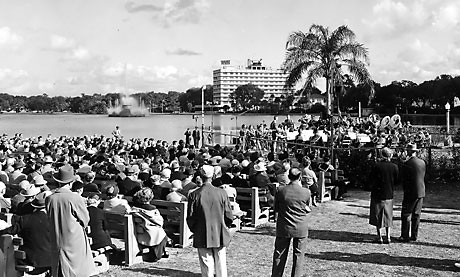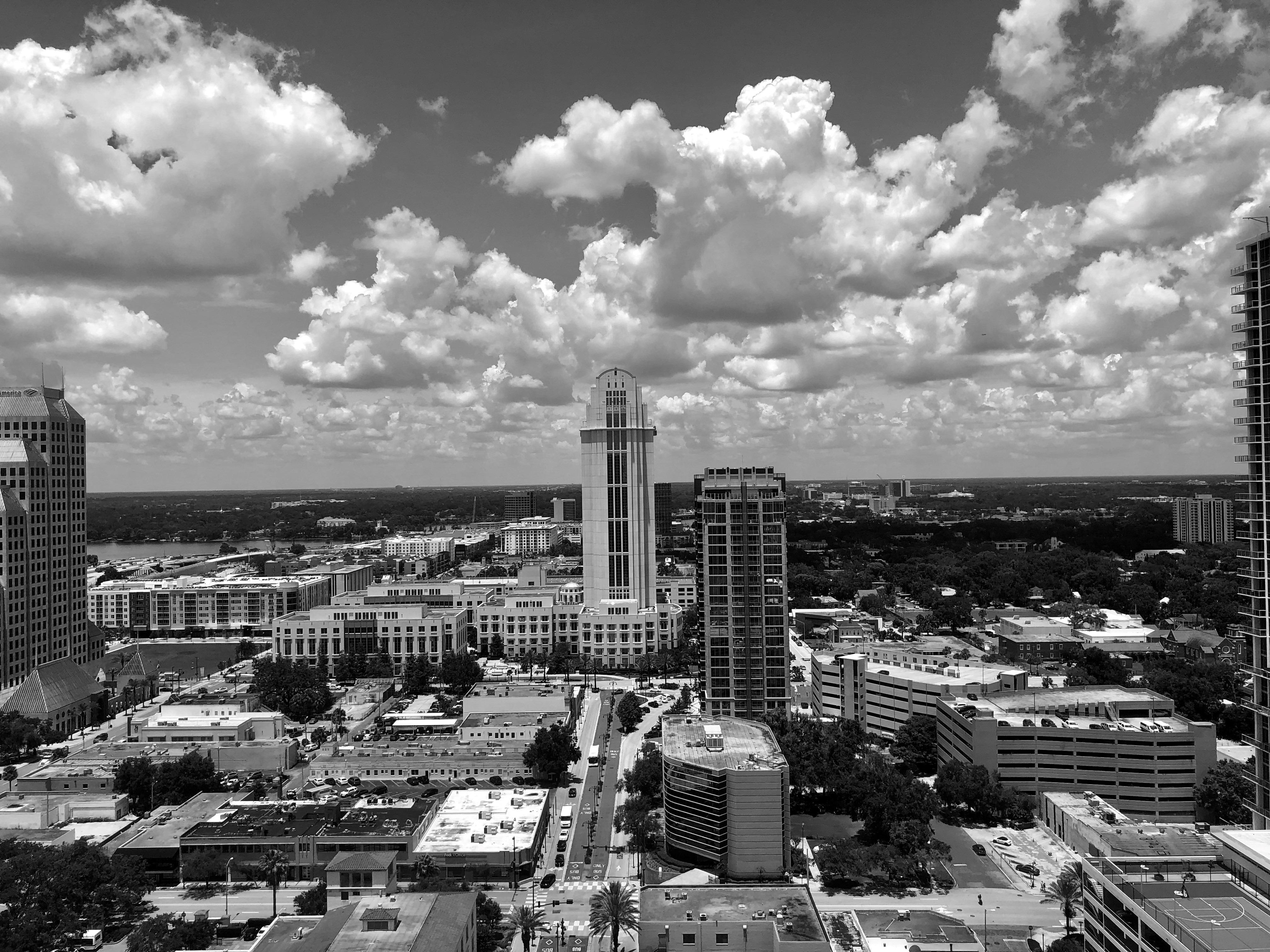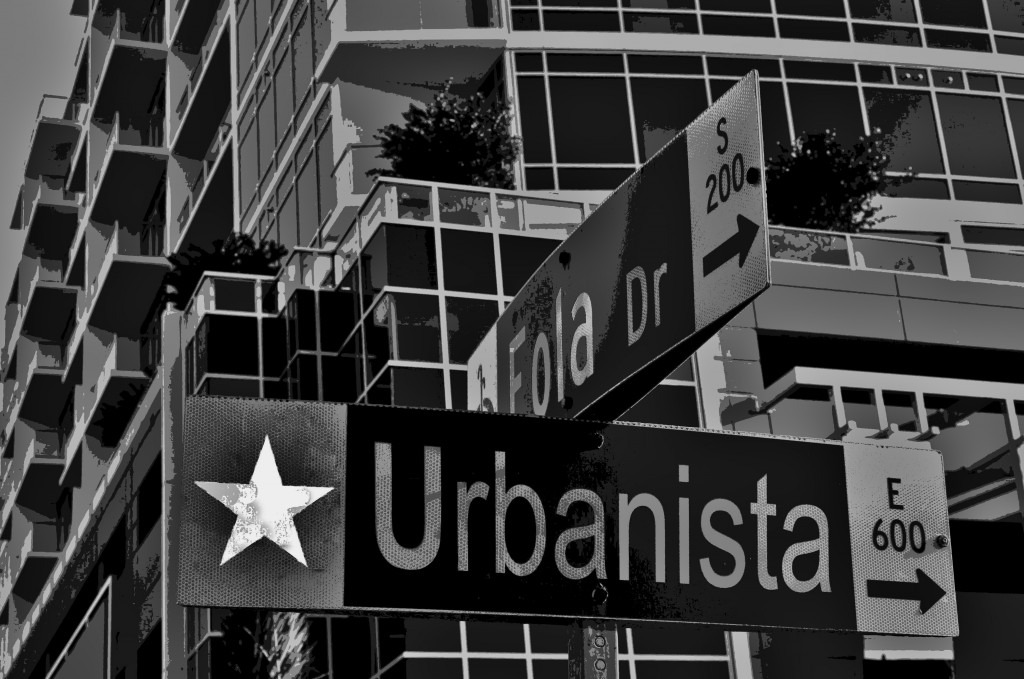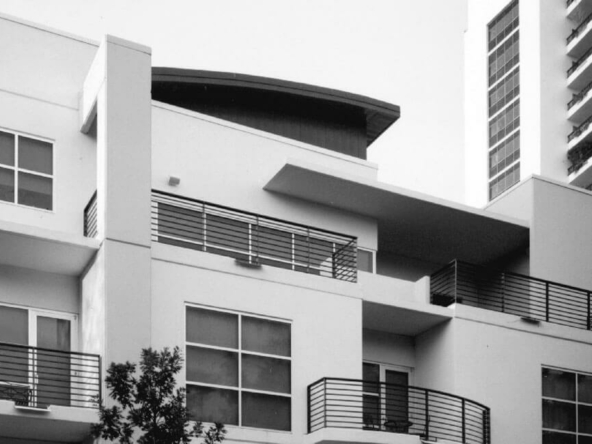Tale of Two Neighborhoods
Two Florida communities — unlike demographically and geographically — followed similar paths as they declined, then rose again over the past 50 years. Today, they face the same challenges going forward.
Like many of Florida’s best old neighborhoods, downtown Orlando’s Lake Eola/Thornton Park and Miami Beach’s “South of 5th” — “SoFi”— had their heydays in the 1950s, when children filled the sidewalks and shopping, services and worship were a short walk away. In the latter half of the 20th century, the two areas’ decline and their fight for renewal typified the struggles of urban neighborhoods throughout Florida. Today, Lake Eola/Thornton Park and SoFi are becoming harbingers of Florida’s future, as cities across the state work to build urban centers that remain affordable and diverse — even as development pressures drive up the cost of urban living.
SoFi: By the 1960s, Miami Beach had established its reputation as “America’s Playground” with its wide, tropical beaches, nearly 500 hotels and star power — from the Beatles doing the “Ed Sullivan Show” at the Deauville Hotel to Jackie Gleason’s weekly filming of his television show. The playground was ethnically divided, however. Neighborhoods to the north, as well as many of the resort hotels, had little tolerance for diversity. Some featured “restricted clientele” rules; some came with deeds prohibiting “Hebrew blood.” South of Fifth Street, however, the city was home to a thriving, mostly Jewish community, with many families living in tidy bungalows or small apartments. The Beth Jacob Synagogue on Washington Street flourished, and four kosher markets and delis sold challah and smoked fish in a two-block area on Collins Avenue between Third and Fifth streets.
“We knew that there were neighborhoods where we weren’t welcome, but we were still living this wonderful, really glorious era of Jewish life,” says Seth Bramson, whose father had a sign shop on Fifth Street. “Growing up in Miami Beach right after World War II until the very early 1970s was like growing up in paradise.”
By 1970, Jews accounted for 80% of the permanent population of Miami Beach, according to Abe Lavender, a sociologist at Florida International University who studies Jewish life and has lived in the neighborhood since 1988. And SoFi had become a haven for Jewish retirees, many of them low income Meanwhile, younger Jews stopped moving in, says Lavender, in part because they were by then welcome in other parts of Miami and in part because they didn’t want to live in “God’s waiting room.”
As the neighborhood declined, its identity crisis became so acute that in 1967 the city formed a Committee To Keep Greater Miami Beach Young. But as Howard Kleinberg writes in his book, “Miami Beach,” the campaign couldn’t alter the destiny imposed by the area’s senior-dominated demography. In 1973, the city created a South Shore Redevelopment Area that aimed to get rid of every structure south of Fifth, save for Joe’s Stone Crab restaurant. City leaders imagined the $400-million plan would revitalize the southernmost point of America’s Playground. Instead, it all but guaranteed the area’s decline.
Lake Eola/Thornton Park: For the first half of the 20th century, the area east of downtown Orlando was home to cattle barons, then to citrus growers and the bankers who loaned them money. They built brick streets and neo-classical and Tudor homes. After World War II, Lake Eola/Thornton Park boomed with families and businesses that grew — just as in SoFi — along a Washington Street. The future looked bright in 1957, when city leaders spent $350,000 for a fountain in the middle of Lake Eola. But in the ’60s, the neighborhood began a swift decline — embodied in a different fountain, this new one at Orlando’s first shopping mall, Colonial Plaza. Only two miles away from Lake Eola, the suburban mall featured a Woolworth’s counter and a multistory Jordan Marsh. The city also began sprawling westward, where Glenn Martin Co. — later Martin Marietta, later Lockheed-Martin — built a missile factory in what had been the boondocks.
The mall may have begun the demise of downtown Orlando and its neighborhoods, but Disney World cinched it. When Disney opened its doors in 1971, it didn’t just draw tourists. It further lured population, highway infrastructure and businesses to the west of the city — on the other side of town from Lake Eola/Thornton Park and other eastern neighborhoods. “Disney had a real glamour, and many people wanted to be part of that,” says Sara Van Arsdel, executive director of the Orange County Regional History Center. Just as in SoFi, Thornton Park’s population began to age, and young professionals were looking for more youthful neighbors — along with bigger homes and yards. There were, of course, exceptions: As a young married couple, Sue and George Macnamara bought their white colonial on East Washington Street in Thornton Park from his parents in 1972. They had noticed aging neighbors and lots of turnover “but had fallen in love with the house, and that was that,” Sue Macnamara says.
SoFi: Theories abound as to why the $400-million South Shore Redevelopment plan was such a disaster for SoFi. But one thing seems clear: The prospect of the city coming in and demolishing buildings led many property owners to stop taking care of their existing buildings and to avoid developing anything new. “Nobody would repair their buildings, which made it a very difficult place to live, particularly for the elderly,” says Abe Lavender. As elderly Jews died or moved away, they often were replaced by immigrants. Because the neighborhood was so cheap, it attracted the poorest of the poor, including Mariel boatlift exiles. Crime was rampant. “Everything that wasn’t tied down, and half of those, were stolen,” Lavender says. “Elderly Jews walking down the street would be attacked for the very little that they had.”
Before things got better, they would get worse. By the time assistant city planner William Cary moved to Miami Beach in 1994, the city had abandoned its redevelopment plan — without producing much redevelopment. In 1995, Cary was called out to inspect an old structure known as The Brown’s Hotel — the city’s very first hotel, a two-story, wood-frame building built in 1915 by William J. Brown right on the sand. By the time Cary saw the place, it had been covered with stucco to protect it from hurricanes. Renamed the “Star Apartments,” it was, in reality, a flophouse. When he went inside, vagrants were lying on floors throughout the building, all in the dark. When he got back to his car, hundreds of fleas began to jump off him and his partner; the fleas soon covered the inside of the city car, which couldn’t be driven for weeks after.
Cary and city codes officers were sure the city’s most historic building would burn to the ground one night. It did not. Instead, The Brown’s Hotel would soon embody SoFi’s comeback.
Lake Eola/Thornton Park: By the 1980s, the Macnamaras had a son. But the neighborhood was beginning to seem like a rotten place to raise kids. Many of the area’s parks, says Sue Macnamara, including the lush Dickson Azalea Park and Langford Park near their home, had become hot spots for prostitution. The flashing blue lights of police cars appeared as regularly as the green lights in the Lake Eola fountain. Craig Ustler, now 39, was growing up in nearby College Park. He says parents admonished their high school-aged children not to go near what they derisively called “Lake Eerie-ola.” As residents continued to move out or die off, some homes were boarded up or turned into rentals. Boarding houses popped up along the brick streets. “It got close to being a slum,” says Sue Macnamara.
revitalization efforts began building — led by then-Mayor Bill Frederick and others like the Macnamaras. For her part, Sue Macnamara, fed up with the prostitutes still hanging out in the park across the street from her house, began going door to door, finding neighbors to sign petitions and help her get parts of the area — like the quaint Washington Street Bridge with its white pillars — designated historic sites. This period also saw the first wave of young, white-collar newcomers — many gay — who were sick of urban sprawl and seeking more “authentic” neighborhoods. They began buying and fixing up the quaint bungalows.
One of those young people was Phil Rampy. Soon, he and Ustler, his neighbor, had become a two-man gentrification team. “Back then we were buying them for $50,000, fixing them up on weekends, and selling them for $150,000,” says Ustler. In 1996, Winter Park restaurateur Dexter Richardson took a chance when he opened a Dexter’s restaurant at 808 Washington St. — the former site of Orlando’s first Publix, which had opened in January 1940. The neighborhood was achieving critical mass.
SoFi: On a balmy evening this summer, a bright yellow Maserati idles among the cars lined up for valet parking outside a popular steakhouse called Prime One Twelve. The elegant restaurant, where the least expensive entree is a $20 Kobe beef hot dog, is in an impeccably restored, two-story wooden building — The Brown’s Hotel, raised three feet and moved 15 feet back to comply with city codes.
The remarkable transformation of the old hotel came as a surge of interest in historic preservation in the mid- and late 1990s sparked investment in the area. The neighborhood came to mirror the hotel. As fine wines replaced winos, “developers began looking at properties they never would have looked at before,” says William Cary. South Beach’s movie industry/beautiful people era spilled down into SoFi, bringing more young people, including many upper-middle-class Hispanics, who now make up more than half of the population. Says Cary: “Literally, it’s changed from drug-crazed bad guys (Cary once had to run from them while filming a historic-designation report) to one of the most alert, active residential neighborhoods in Miami.”
Today, SoFi epitomizes the riddle that successful redevelopment seems to produce. The area is safer and economically healthier for businesses, and the high rises have pumped in tens of millions of dollars in tax-increment financing to pay for public works like an improvement project under way at the South Pointe Park.
Meanwhile, however, permanent residents battle resort owners over noise ordinances and limits on outdoor partying. The film industry has migrated to the more reasonably priced Design District in Miami. And the hotel staff who once called SoFi home while working farther north on the beach now can’t afford to live here. At a high-rise project called South of Fifth, condos sell for upward of $5 million despite the economic downturn.
Indeed, the big question is whether SoFi can remain a sustainable, residential neighborhood given the price pressures created by Maserati-driving sports figures and Europeans who buy homes here for occasional use.
“It is a real question as to the sustainability, especially of families with children,” says Frank Del Vecchio, a retired attorney who lives in SoFi and has led successful battles for noise ordinances and other neighborhood issues. “On the other hand,’’ he adds, “people are making the decision that this is a great place to be. Families are trending toward urban living,” he says, as he watches parents and their kids across the street at the beachfront Marjorie Stoneman Douglas playground. Closed in the 1990s, the park these days is filled with children.
Lake Eola/Thornton Park: On a recent morning, developer Craig Ustler sips a house blend at the Starbucks on the corner of Central Boulevard and Summerlin Avenue and contemplates the transformation from Lake Eerie-ola to hot address. Starbucks is a tenant in Thornton Park Central, a $31-million, mixed-used project completed by Ustler in 2001. Overhead are 56 loft condos. Around the corner are shops like independent bookstore Urban Think.
Ustler owns and operates several restaurants now, including Hue and Cityfish in Thornton Park Central. Annual sales at his eateries exceed $12 million. He has pumped nearly $100 million more into other developments, including Eola South, Osceola Brownstones, 801 North Orange and East on Park. Moms and dads push baby strollers where police cars used to flash their lights. Along with the 20-somethings the developers expected, the neighborhood is drawing a surprise demographic: Empty-nesters moving into the condos.
But despite the many signs of success, the revitalization of Thornton Park is far from perfect, and far from over. Some lots sit empty where developers bulldozed old houses to make way for new projects, then backed out as the economy sagged. The new-urbanist ideal of leaving the car at home — or not having a car at all — clearly hasn’t been realized. Parking is a problem, and people seem to drive short distances just to have lunch on Washington Street. Sue Macnamara says families aren’t thrilled about the bar scene in the neighborhood; it’s crowded and sometimes obnoxious. And there’s growing tension over the creep of condo towers from downtown proper into the neighborhood. Most recently, local firm Eola Capital proposed a 20-story tower on property it owns across from Lake Eola’s waterfront playground; the company would have to raze five historic homes to build it. “This is where you get tested,” says Ustler, who has backed off of his next mixed-use project in favor of building office space, which is still in demand in the neighborhood.
Sara Van Arsdel, the history center director and anthropologist by training, says she feels sure that the neighborhood will pass the test. “Downtown Orlando and particularly Lake Eola and Thornton Park have tremendous providence,” Van Arsdel says. The economic downturn means “people will become dependent on their neighborhoods once again, and these are neighborhoods people can depend on.”
The latest big tenant moving in nearby at The Paramount on East Lake Avenue? Publix — returning downtown after more than 50 years.




